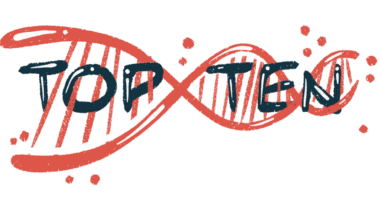Potential DM1 Therapy, PGN-EDODM1, Shows Safety in Studies
Work in non-human primates, other models support earlier efficacy findings

PGN-EDODM1, a therapy candidate for myotonic dystrophy type 1 (DM1), showed a favorable safety profile in preclinical studies, including those in non-human primates, PepGen, the company developing the treatment, announced.
This work is expected to support a request to initiate a single ascending dose clinical trial of PGN-EDODM1 in DM1 patients, possibly in or by June 2023, according to a company press release. That study would assess the therapy’s safety, tolerability, and activity in patients.
“We are highly encouraged by the results seen in these [application-supporting] studies, and are excited by the potential of PGN-EDODM1 to address the root cause of this debilitating disease,” said James McArthur, PhD, PepGen’s president and CEO.
“There are no approved, disease-modifying therapeutics currently available to those living with DM1, and we look forward to advancing PGN-EDODM1 for this patient population,” he added.
PGN-EDODM1 aims to correct splicing defects of myotonic dystrophy type 1
DM1 is characterized by progressive muscle weakness and muscles’ inability to relax after use (myotonia). The disease is caused by abnormal repeats of three nucleotides — DNA’s building blocks — known as CTG in the DMPK gene. This leads to the formation of abnormally long messenger RNA (mRNA) molecules, which form toxic clumps. mRNA is an intermediate molecule derived from DNA that guides protein production. In mRNA, the corresponding nucleotides are CUG.
These long mRNAs lead to impairments in splicing, a key step in RNA processing to generate a protein.
PGN-EDODM1, designed using PepGen’s Enhanced Delivery Oligonucleotide (EDO) platform, binds to the CUG repeats to correct the splicing defects that underlie DM1.
In previous preclinical studies in a DM1 mouse model, PGN-EDODM1 showed signs of efficacy. One study reported that a single, low-dose administration of PGN-EDODM1 was able to correct splicing defects and reverse myotonia.
“We have previously shown that PGN-EDODM1 can achieve greater than 60% correction of the mis-splicing events in a murine model of DM1, resulting in a complete reversal of myotonia. This correction in mis-splicing was observed to be highly durable, with activity sustained through 24 weeks following a single dose,” McArthur said.
Building on these early findings indicating efficacy, PepGen has now completed studies into the potential therapy’s safety profile.
In vitro (lab) tests were done using precursors of muscle cells, called myoblasts, collected from a DM1 patient with 2,600 CTG repeats. The cells were developed into muscle structures called myotubes, which were then treated with PGN-EDODM1 at various concentrations.
The scientists also evaluated the impact of three doses of PGN-EDODM1 — 10, 30, or 60 mg/kg — administered every two weeks to non-human primates.
In both patients’ and primates’ cells, the mean levels of DMPK mRNA remained unchanged when compared to controls. The treatment also lowered levels of mRNA toxic clumps and corrected splicing defects.
According to PepGen, findings showed that PGN-EDODM1 does not degrade DMPK mRNA. In a mouse model of DM1, a single-dose of PGN-EDODM1 had no impact through 24 weeks in the levels of other mRNAs containing more than 10 CUG repeats, suggesting no off-target effects.
“We believe that PGN-EDODM1 offers a targeted approach for the treatment of DM1, without the risk of potential confounding effects,” McArthur said.
PGN-EDODM1 was well-tolerated in non-human primates up to doses of 90 mg/kg in toxicology studies. No adverse effects were seen in kidney, liver, or cardiovascular function.
“We observed that this product candidate was well-tolerated in acute GLP [good laboratory practice] studies conducted in rodents and NHPs [non-human primates] at what we believe are clinically relevant doses,” McArthur said.
PepGen’s EDO platform aided in developing a Duchenne muscular dystrophy (DMD) therapy called PGN-EDO51, and the investigational treatment recently was tested in a Phase 1 trial with healthy volunteers.
Trial results showed that the therapy’s use met a main study goal, with PGN-EDO51 being well-tolerated at pharmacologically relevant doses. Muscle biopsies also showed signs of efficacy.
“Results from our recent Phase 1 clinical trial of PGN-EDO51 in healthy volunteers suggest that our EDO technology has the potential to deliver therapeutic levels of the PGN-EDODM1 oligonucleotide to human muscle,” McArthur said.







